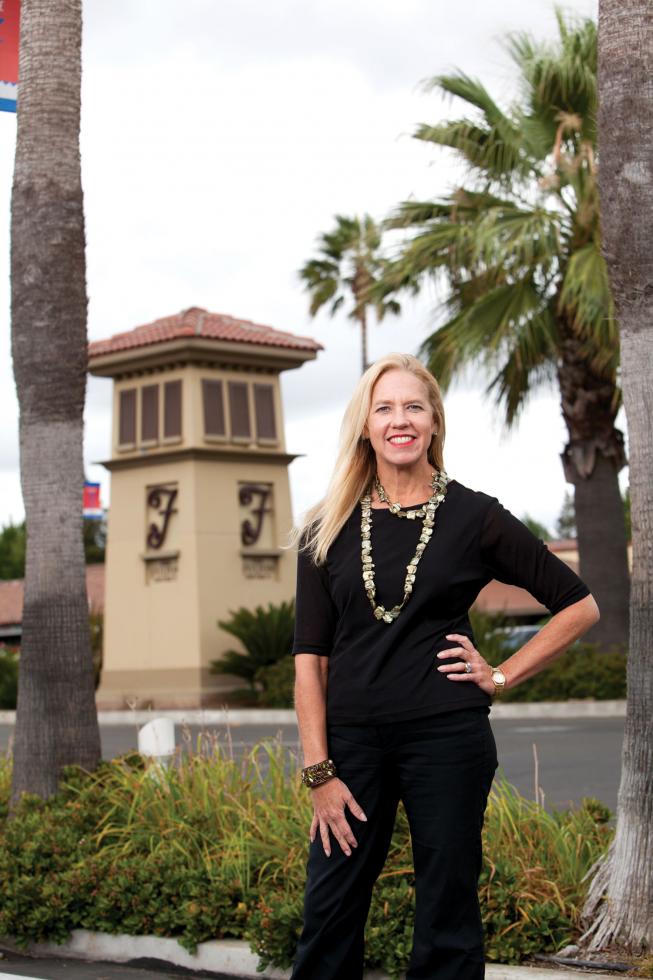Melinda Eppler, executive director, Fulton Avenue Association

At one time Fulton Avenue was given the ignominious title of ugliest street in Sacramento. It wasn’t completely undeserved. By the mid-90s many of the business and property owners on the street were beginning to feel ignored by Sacramento County. Streets weren’t swept, maintenance issues went unresolved and the street seemed caught in a spiral of decay.
Those same owners, many of them second generation proprietors along Fulton Avenue, were not going to let that spiral continue. They met with then-Supervisor Muriel Johnson, who suggested they form a Property and Business Improvement District to complement and expand what services the county could provide. After a little research and a close look at the PBID formed along Florin Road, which had much in common with Fulton, the owners pooled their resources and moved forward. The Fulton Avenue Improvement Association launched in 1998.
“Our goals were set forth in a master plan with beautification and infrastructure improvements to make the street look nicer among the highest priorities,” says Melinda Eppler, FAA’s executive director.
There were some admittedly pie-in-the-sky ideas. One lofty ambition called for taking the overhead cable, phone and electricity wires underground. They were a crisscrossed, unsightly maze overhead, and the power poles were planted right in the middle of sidewalks so wheelchairs couldn’t pass by. Few founding members, however, thought it was a problem that would be addressed in their lifetimes.
“It was a pipe dream,” says Tim Cahill with Charles C. Bell Inc., the current chair of the district’s board. “And so was the hope that we could get a 12-inch waterline, which would have tremendous implications for development. We figured that was a 20-year goal at best, but we got it done. We got a new water main and 56 new fire hydrants, which shows you how underserved we were in fire protection alone.”
Today, with 132 properties and 350 businesses in the district, there are several indicators of success. It’s been renewed by property owners twice. In its 11-year history it has collected $3.7 million in district assessments and leveraged an additional $24 million in improvements from public sources. It has locked in an agreement with the county that establishes a policy of maintaining the existing level of services in the district. It’s taken positive steps to reduce crime and increase public safety, and it has established its own waste pickup program.
Far and away, the biggest sign of its success is the visual contrast between the Fulton Avenue of the 1990s and that of today.
“In a down economy, we’ve actually maintained property values,” Eppler says. “We’ve got big properties in escrow, and we’re even seeing numerous examples of owners updating and improving their own buildings and landscapes. There’s a lot of pride here today, and it’s evident in the reinvestment people are making in their properties.”
Cahill agrees, saying the improvements along Fulton Avenue are not only for the business and property owners but for the larger community as a whole.
“Over time it has an important effect in that it shows that the business community and local leaders are committed to making the area safer, cleaner and more prosperous,” Cahill says. “That makes it an area where local residents want to live, work, shop and dine, and it makes businesses want to set up shop here.”
Looking ahead, as the beautification efforts continue, one of the district’s bigger initiatives is the establishment of a special planning area that will create more flexible zoning options for businesses within the district boundaries. If an owner decides to change the use of their property once the SPA is approved, they’ll be able to employ an expedited rezoning process that will cost a fraction of what it used to, both in time and money.
Consistent with the trend, FAA leaders point to regular, two-way communication with property owners and solid relationships with their public sector counterparts as the keys to the district’s success. In the latter case there are benefits for the county as well.
“Having a district like this in place gives local governments an organization that they can talk with and plan with as they look at developing the area in the future,” Cahill says. “There’s much you can get done with willing groups of business and property owners working together with a willing local government.”


